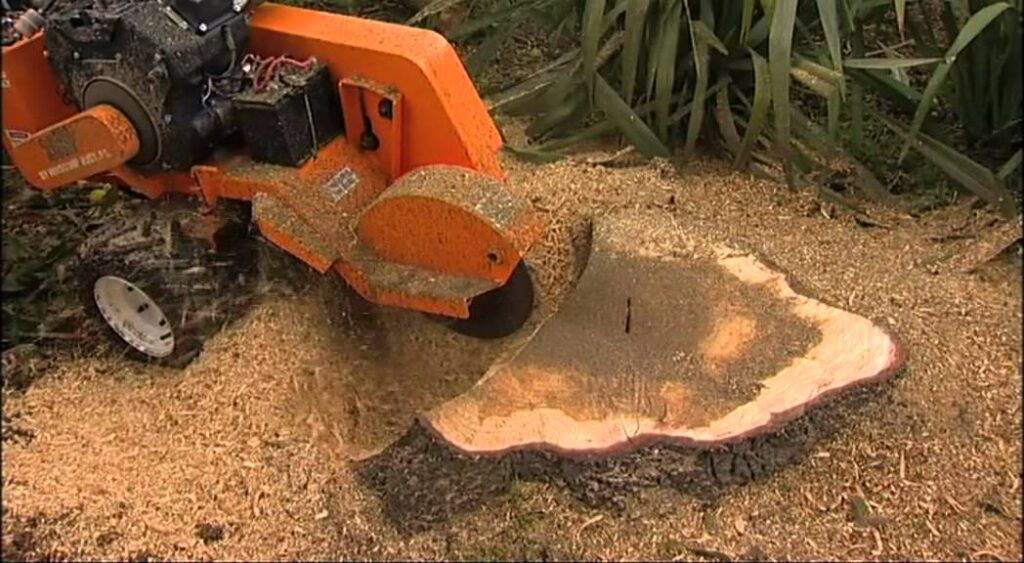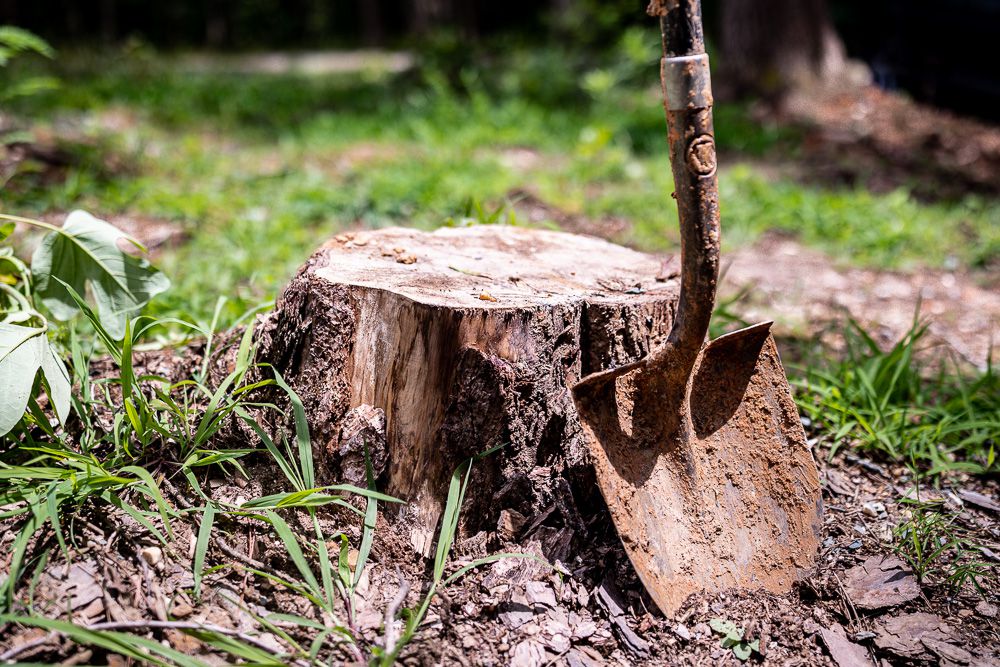When people call to book tree removal appointments, one of the questions we are asked most often is if stump removal is included. Many people assume the process leaves a clean yard, but the truth is that tree removal and stump removal are usually considered two separate services.
Knowing the difference will ensure that your property looks just how you want it to be and help get the landscaping job done correctly, particularly from professional Richmond tree services.
Difference between tree removal vs stump removal
Tree Removal involves chopping the trunk and branches of a tree, with the root system and stump left. Stump extraction/removal removes or grinds out the stump and root ball. Tree surgeons and contractors commonly offer both services, however, the cost for each can be determined separately.
Tree removal is often faster because there’s no need to dig out the root collar or grind down the leftover stump. In contrast, stump removal and stump grinding usually call for specialized tools, equipment, and extra labor to ensure everything is completed properly. This is especially important for homeowners who want their entire yard cleared after a tree-trimming project—and for those wondering who to call for fallen tree removal when the job requires a full cleanup.
When you’ll need separate stump services
Other stump services you might need include:
- You need to replant a tree in the same place.
- The remaining stump is interfering with landscaping or construction.
- Sidewalks, foundations, or driveways are being approached by roots.
- You’re worried about pests or fungus that might grow on the stump.
Leaving a stump behind might seem harmless, but it can quickly invite termites, carpenter ants, or fungus into your yard. Opting for professional tree removal in Sandston, VA not only prevents these issues but also restores your landscape’s clean, polished look.
How stump grinding vs full stump removal works

Full stump removal and stump grinding are the general procedures that most Richmond tree services will use.
- Stump grinding: This technique involves using a grinder to grind the stump down into wood chips, which brings it below ground level. It’s faster, less invasive, and affordable. But the roots are still there and will eventually decay.
- Complete stump removal: This entails removing the stump as well as the root ball. It is more labor-intensive and requires heavy equipment, but it leaves you with a blank canvas for landscaping or construction.
Both methods have their own benefits. When deciding between them, homeowners should think about factors like budget, property safety, and even the time of tree removal, as timing can impact both cost and future landscaping plans.
If you’re planning major outdoor changes or need expert guidance, exploring tree removal in Manakin Sabot, VA can help you make a safer, smarter decision.
How to request stump removal from a tree service contractor
When you hire a tree service contractor in Richmond, be sure to ask whether palm removal is specially priced separately or if it’s included under the umbrella of other types of tree service stump removal. Some companies automatically price their tree removals including stump grinding but others may surprise you and charge extra for it. Make it clear in the beginning what you’re expecting and get a detailed cost estimate for tree removal, along with stump digging. This way, you get the proper service without any surprises.
Cost factors: including stump removal or not
Here are a few things that will affect the cost of tree removal: Size, Location, and Complexity. The cost of tree removal varies based on various factors like the size and height of the tree, its location, as well as how difficult it is to remove. Some things that affect the cost of stump removal include:
- Size of the stump: A bigger stump means a longer time to grind or remove.
- Root system: Trees with broad or deep root collars require more work.
- Equipment used: Equipment used takes into account cost, such as stump grinding machines vs excavation tools.
- Access: Stumps in close proximity to buildings or difficult positions may result in higher prices.
- Type of service: Grinding is generally less expensive, and full extraction is more expensive.
In general, it costs less to include stump grinding as part of a regular tree removal service than to schedule it separately. Yet others choose to have the services performed at varying times based on budget and landscaping needs.
When you work with a reliable, reputable provider like Timberbrute, the pricing is transparent and the job is done professionally to suit your property.
Frequently Asked Questions
1. Is stump removal automatically included in tree removal?
No, unless it is stated in your contract, most companies consider stump removal as an add-on service.
2. What’s the difference between tree removal and stump removal?
Tree removal eliminates the trunk and branches, while stump removal extracts or grinds the leftover stump and roots.
With tree removal, you are removing the trunk and branches, and stump removal removes or leftover stump and roots.
3. Why do companies charge extra for stump removal?
Stump removal requires its own set of special equipment and a little more work, which generally makes it more expensive than traditional tree removal.
4. Can I leave the stump after tree removal?
Yes, you can, but it could lead to problems like pests, regrowth, and fungus in the long run.
5. What’s the best option: stump grinding or full stump removal?
Grinding is quicker and cheaper, while full removal is best for replanting or construction. But which is best for you depends on future plans.
Conclusion
Tree removal may not always be done together with stump removal, and understanding the difference can save time, money, and headaches. Both stump grinding and a full removal add to your home’s overall health and safety, so you’re not left with any potential hazards.
To learn more about Richmond tree service, give the Timberbrute team a call and contact them to get an estimate.

